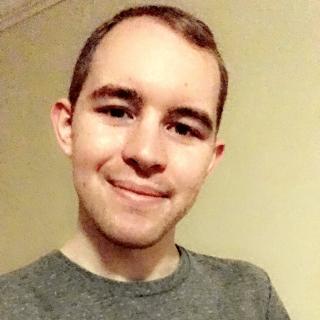The fluorescent lights buzz overhead as I sit quietly in the back of the class. I’m buried deep in the rows of identical desks with all my classmates as we watch the teacher in the throngs of an English lecture. Everything is organized and simplified here. My desk is perfectly situated to match my books which are perfectly centered along with my pencils which lay perfectly parallel to them, almost. I take my eyes off the teacher to notice one of my pencils is out of place. I quickly rectify the placement as I feel tension building in my shoulders.
Moments like these are common in my day-to-day life.
I was diagnosed with autism when I was 10 years old. Shortly after that, I was also diagnosed with OCD and anxiety, which compounds my autism. The combination of all of my diagnoses affects my daily rhythms, like the way I tap light switches in multiples of threes or count every step I take. On top of that, I realized that I was gay around the same time in my life and first came out privately to close friends in my late teens.
With regards to being autistic and having OCD, I always knew I had specific tendencies, but never understood what they meant until I received a proper diagnosis from my school. For most of my life, I had assumed that having either, much less both, meant something bad as I had often heard them described in a negative context. As I learned more however, the uncertainties gave way to clarity and the diagnoses clicked in my mind; I said, “That’s me!”
Being a young person at the intersection of these identities can be precarious. A 2017 study by the CDC found that 34 percent of LGBTQ+ students reported being bullied on school property while for autistic children, a CBS survey found that 63 percent of them reported being bullied at school. Despite not coming out publicly about my identities when I was younger, I often felt left out and different. Bullying in elementary school was particularly terrible for me. In middle and high school I tried to fit in, but I could never avoid the contemptuous looks and condescending voices when I struggled to function. Changing schools often due to my military family life helped by getting fresh starts, but it also hurt my ability to make connections.
I felt as though I walked around with two targets on me as gay and as autistic, so I did my best to make fly under the radar for a lot of my life. Rather than speak up during my classes, I quietly absorbed every word my English teacher said and spent my free time writing my own stories, often ones that revolved around queer characters. On the blank sheets I discovered a place I didn’t need to order; I could let my mind run wild and let my feelings take over.
In the years since my diagnosis, I’ve tried my best to be clear about being autistic in the hopes that it helps people better understand my mannerisms and social awkwardness, but it’s a constant journey.
At the Pride March to Remember back in June, I listened to the chants of the crowd reverberate through the streets. An array of colors — blue, pink, white — from attendees who wore multi-colored attire swirled around me. Some dressed in rainbow while others adorned their outfits with feathered blooms. It was my first time on my own as a gay man at such an event, but I worried about fitting in as an autistic person.
My shyness washed over me as thoughts about how I’m presenting myself raced through my mind.
Am I making eye contact for too long or too little? Did I use the right tone? Do I fit in with the crowd? The acceptance that I never felt in school was there but the comfort of structure wasn’t. There were no two people who looked alike in the congregation. The queer community, after all, is a world outside boxes. As I looked down at my blank notepad, I gathered the courage to step outside my own boxed comfort zone. I counted my steps in threes and pushed myself to interview key speakers and organizers for quotes.
As I made my way home that night, I couldn’t stop smiling.
I had crossed the parallel lines of my structured nature. I felt exhilarated, energized. And even though the storm of insecurities rages on, I’m slowly building the shelter I need to not only survive, but thrive, in this life of mine.
Join the First Amendment Society, a membership that goes directly to funding TCB‘s newsroom.
We believe that reporting can save the world.
The TCB First Amendment Society recognizes the vital role of a free, unfettered press with a bundling of local experiences designed to build community, and unique engagements with our newsroom that will help you understand, and shape, local journalism’s critical role in uplifting the people in our cities.
All revenue goes directly into the newsroom as reporters’ salaries and freelance commissions.


Leave a Reply